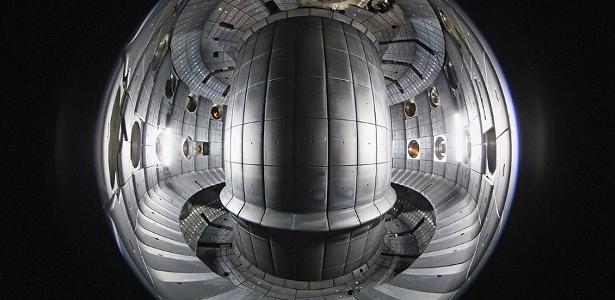The researchers took another step to use it nuclear fusion reactors as energy sources. A new study has been developed Artificial Intelligence (AI) Capable of controlling the superheated plasma inside the machines, which can be a solution to the biggest problem in using reactors for electrical supply.
Fusion reactors are cheap, plentiful, and relatively clean energy—if they can ever be made to work. These reactors are still an experimental machine, and they are designed to harness the energy generated by a nuclear fusion reaction.
This breakthrough could help physicists better understand how fusion works and accelerate the development of an unlimited source of clean energy.
In nuclear fusion, the nuclei of hydrogen (H) atoms are forced to form heavier atoms, such as helium (He). This produces a lot more energy compared to a small amount of fuel, making it a very efficient source of energy, and a much cleaner and safer fuel. fuel Fossil fuels or conventional nuclear energy. This is also the process that fuels the stars.
However, controlling nuclear fusion is not an easy task. The problem is that the process of fusing atomic nuclei can only be done at extremely high temperatures, turning the material into a plasma much hotter than the surface of the Sun inside the reactor.
The challenge is to keep these plasmas together long enough to extract energy from the heat. This task, with the help of lasers and magnets, requires continuous monitoring and manipulation of the magnetic field that keeps the plasma stable. This is where artificial intelligence comes in.
DeepMind, in partnership with scientists at the Swiss Federal Institute of Technology in Lausanne (EPFL), Switzerland, has developed an artificial intelligence capable of controlling magnetic fields inside EPFL’s Tomakak Variable Configuration (TCV) fusion reactor.
Tokamak is the name given to a type of reactor whose energy produced in the form of heat is absorbed by the walls of the vessel in which the plasma is delivered. The nuclear fusion plant then uses that heat to produce steam and electricity through turbines and generators.
These magnetic fields are essential to the safe operation of the reactor. If the hot plasma comes into contact with the walls of the container, it cools quickly, stopping the fusion reaction, which can cause severe damage. DeepMind’s AI is able to control all magnetic coils at the same time, automatically recognizing the voltages required in each to better contain the plasma.
In total, the AI controlled the plasma for 2 seconds, a time close to the reactor limit – the TCV can only preserve plasma in one experiment for up to 3 seconds. After that, the device needs 15 minutes to cool down.
The record plasma control time for fusion reactors is only 5 seconds, which was recently set by JDC European hoop in the UK.
The neural network was trained to make 90 different measurements of the position and shape of the plasma inside the reactor, thus tuning 19 magnets to respond to changes and continue to control the process. The technology works much faster than previous algorithms, being able to iterate the feedback loop up to ten thousand times per second – and of course, it’s much faster than a human operator.
To speed things up, the AI has been split into two neural networks. One big one, called Criticism, I learned by trial and error how to control the reactor within the simulation. The learned skill was then encoded into a smaller, faster network, called the actor, which runs in the reactor itself.
In an interview with New Scientist, researcher Gianluca Sarri, from Queen’s University Belfast in the UK, said artificial intelligence is the key to the future of control systems for these reactors, which still need to evolve to sustain a reaction that produces more energy than it consumes.
“Once you do that, that’s not the end of the story,” he says. “So you have to build a power plant.” “And this AI, in my opinion, is the only way forward. There are many variables, and a small change in one of them can make a huge difference in the bottom line. If you try to do it manually, it will be a very time-consuming process.”

“Incurable thinker. Food aficionado. Subtly charming alcohol scholar. Pop culture advocate.”








More Stories
Xbox Game Pass surprises with a great gift for Blizzard fans
An extraordinary volcano that expels 80 grams of gold per day and is located in a place you wouldn't even imagine
System software update 24.03-09.20.00 is available for PS5